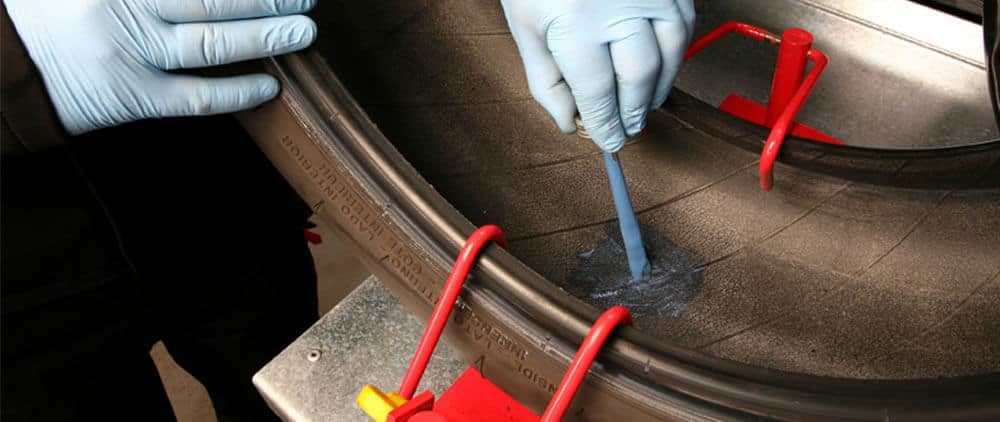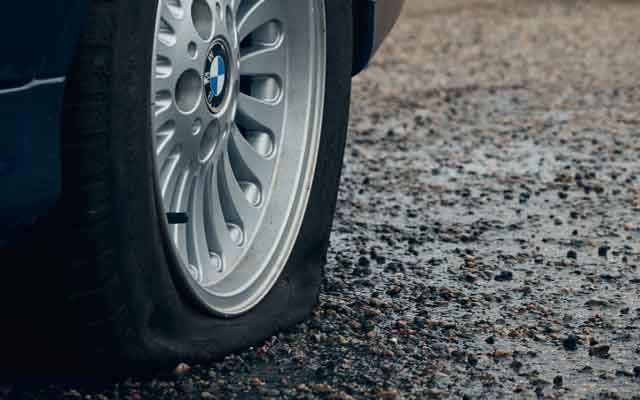Everything you need to know about slow punctures
It will often take a while for even the most aware of drivers to spot that their car is suffering from a slow puncture.
It’s always such a hassle to get a tyre fixed or to buy a new one, especially if we can talk ourselves into that it might not even be damaged in the first place.
The bad news is, if you have convinced yourself you’ve simply lost a little air hitting a pothole, riding a kerb or rolling around a sharp bend, you could be doing a lot more damage than you think.
The dangers of driving on a tyre with a slow puncture
Any damage that can lead to a puncture or a tyre blow out is a serious hazard. High-speed blowouts are difficult to control and will often lead to dangerous crashes and collisions.
Hitting a kerb or driving over anything left in the road can cause damage to your tyres that isn’t always immediately detectable.
Over time and with significant wear, your slow puncture could lead to a real catastrophe.
The tell-tale signs of a slow puncture
The Highway Code dictates that we should all carry out a visual inspection of our cars before we drive them.
It’s absolutely the right thing to do, but how many of us actually carry out this simple action? My guess would be less than 5%.
So, what should we be looking for?
- Sagging tyres
Are any of your tyres a different shape to the rest? Do they sag under the weight of the car? Is one tyre flatter and softer than the others? - Sidewall damage
Is there damage to the walls of your tyres? Has any of the numbering and detail worn away with contact to the road? - Are there any obvious foreign bodies stuck in the rubber?
Can you see a screw, a nail or any other debris your tyre could have picked up from the road lodged in your tyre’s tread?
If you spot something, don’t pull it out—it is more than likely the cause of your slow puncture, but if you remove it, you’ll be removing the only thing that’s temporarily sealing the hole. Change the tyre for the spare. Or if you can get it to a garage safely, do it immediately.
You might also be able to hear signs that can reveal the cause of your slow puncture.
- Listen for repetitive clicking or ticking sounds
Any clicking sounds coming from your tyres, that increase as you drive faster, are a sign that something could be stuck in one of them. Every rotation provides the offending article to create a sound as it makes contact with the road. You should be able to spot the culprit item once you’ve decided which tyre the sound is coming from.
Signs of a slow puncture you can detect while driving
- Poor performance and handling
If your car pulls one way when breaking, or ‘rolls’ as you navigate bends and corners, it’s a sign that one of your tyres is softer than the others.
You should be able to feel that the drive of your car is also slightly softer than if your tyre is filled to the correct pressure.
What can cause a slow puncture in your car tyres?
Items piercing and getting stuck in your tyre
As previously mentioned, the most likely suspect causing a slow puncture will be a foreign body causing damage to or penetrating the tyre surface or wall.
Tyre or wheel corrosion
The rubber of your car tyre will perish over time. Wear in other areas from constant contact against another component, kerbs or small walls can also impact the integrity of your tyre.
This will weaken the structure and in many cases allow air to find a way out of the previously sealed tyre.
Corrosion around the wheel rim is also a typical cause for slowly releasing air. All it takes is the smallest area of rust, paint flaking or alloy perishing on your rim to allow the air to escape at an almost undetectable rate.
Checking your car tyre pressures
A tyre pressure gauge is a very simple and easy to get hold of piece of equipment, that every motorist should have in their toolkit.
A foot-pump or automatic tyre inflator will also feature a pressure gauge; any of these will allow you to check the air pressure in your tyres against the recommended amount shown on the tyre wall or in the vehicle’s manual.
Any regular reduction in pressure will alert you to a probable slow puncture.
Air loss through old or damaged tyre valves
While you’re checking your tyre’s pressure, it’s worth checking that the air isn’t leaking from your tyre’s valve.
Pour a little water into the valve and see if tiny bubbles appear. If so, the repair might be as simple as a valve replacement. They’re just as susceptible to wear over time as any other of your car’s components.
Slow punctures—do I need a new tyre?
Whether your tyre is sufficiently damaged to require replacing or simply a slow puncture requiring repair, the decision is best left in the hands of the professionals.
Driving on a slow puncture will only encourage the damage to escalate. Driving even a little too far on a tyre with a slow puncture could mean the difference between a £20 repair and a £200 new tyre.

When to repair a slow puncture, and when to replace
There are strict rules determining when a tyre can be repaired and when it can’t be. The following rules dictate when your tyre cannot be repaired and must be replaced.
- The tyre must have 1.6mm tread depth across the circumference of the tyre.
- The damage must not be on the wall of the tyre.
- The damage must be within a specific area of the running surface.
- The tyre integrity cannot be damaged from running on a flat tyre.
- The tyre must not show signs of deterioration due to ageing.
- There must be no bead damage.
- The tyre must reveal no exposed cords.
- The tyre must show no signs of faulty or poor quality existing repairs.
Repairing a slow puncture
Repairs can only be carried out to areas of damage that occur where the tyre surface meets the road, i.e., in the tread.
Slow puncture repair kits
Many motoring retailers offer slow puncture repair kits that consist of a glue that acts a sealant. The sealant is fed into the tyre through the valve using a pressurised container and will be drawn to the area that is leaking air.
We’d never recommend this as a long-term solution and should only ever be used in an emergency—if at all.
If you have a slow puncture, or when you suspect that you have, have it checked out by a professional as possible.
Slow puncture repair cost
A simple puncture repair will cost around £20–25 from most garages or tyre services. This simple solution can save you money against the price of a new car tyre and should last the lifetime of the existing tyre.
Slow punctures and your MOT
10% of MOT failures are tyre related. However, if a slow puncture can’t be immediately detected, then you could get your car through its MOT with one. But that doesn’t mean you should.
Get it fixed. Don’t take risks that affect you and your family’s safety.
About Fixter
Fixter is revolutionising the car maintenance industry, one repair at a time. Fixter was founded to make car maintenance as easy as booking a taxi. Digital, transparent and stress-free, with world-class customer service. Since launching in Manchester in 2017, Fixter has expanded to more than 100 cities across the UK and provided thousands of car owners with honest, convenient and affordable car repair services.
